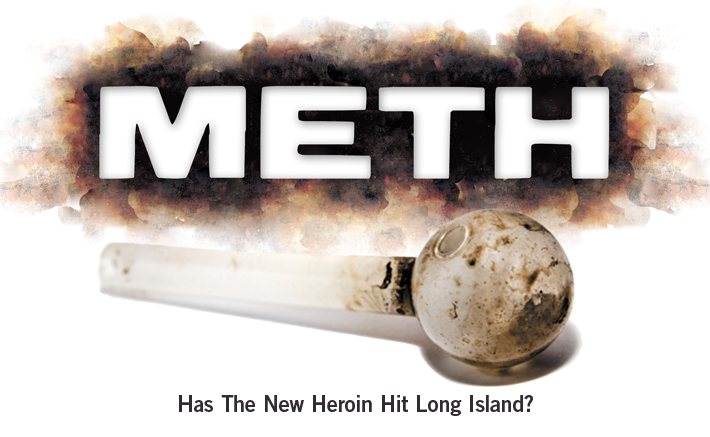Although the Long Island heroin epidemic has plagued both Nassau and Suffolk equally with record numbers of arrests and deaths, as is well-documented since the seriousness of the issue was exposed last year, there has been a stark difference in the response by leaders on opposite sides of the county line. Substance abuse counselors say that cohesive, countywide efforts, similar to measures in Nassau, are “long overdue” in Suffolk and put the blame squarely on the shoulders of Suffolk County Executive Steve Levy, charging that he has brushed off calls for a Suffolk heroin summit.
In the absence of top-down leadership on the issue, localized efforts have gained momentum, with schools and at least one township hosting their own substance abuse town hall meetings to reach affected communities. And while narcotics detectives with Suffolk police have prioritized heroin cases and, in cooperation with the Suffolk Heroin Task Force, made some of their biggest busts in county history in recent months—17 pounds were seized in July—the school-level response from the Levy administration has been mostly police-oriented.
It includes the implementation of the “Text-A-Tip” program in March, which is advertised via posters in schools and encourages students to report drug dealers. More recently, Levy announced that Suffolk schools can soon request inspections by drug-sniffing police dogs. He also announced a heroin presentation that police officers began giving in middle schools this week.
“Increasingly, it’s clear that there needs to be some sort of coordination in Suffolk,” says Jeffrey Reynolds, executive director of the Long Island Council on Alcoholism and Drug Dependence (LICADD), who spoke at the HOPE Summit, a public hearing on substance abuse that focused on heroin addition, at Brookhaven Town Hall on Sept. 22. That meeting came five days after the Islip Cluster of School Superintendents held a parent symposium titled “Heroin is Here” at Hauppauge High School. Still, Reynolds says: “There is still a significant portion of the county where there hasn’t been coordination.”
When Nassau officials held a heroin summit in July, which was a more inclusive follow-up to a May 2008 school superintendent conference that warned the deadly drug was making a comeback, one advocate asked Levy to follow suit. Her request was denied.
“I’m disappointed at the lack of commitment for a Suffolk-wide forum,” says Maureen Ledden Rossi, a member of Kings Park in the kNOw, a community organization that has been on the forefront of sounding the alarm about the heroin scourge [Rossi was a freelance education reporter for the Long Island Press from 2003-2006]. She requested a countywide heroin forum in a letter sent to Levy.
On Aug. 10, Levy responded to Rossi’s inquiry by detailing the strides police have made in making heroin arrests, which he credited to officers meeting with proactive community members like her. He also thanked her for her efforts—but stopped short of agreeing to a forum.
“I think he is noncommittal to the idea of a countywide dialogue because he believes that on his end, everything is being done to combat the problem,” Rossi says.
Since then, Levy has remained noncommittal to the idea. When asked last week if he planned to hold a meeting on the issue for all of Suffolk’s school districts, Levy replied: “We may.”
Even the two officers dedicated to the new heroin presentation through the PoliceSmart program acknowledge that the 35 school districts in the five western towns participating aren’t enough, because elsewhere in Suffolk, school districts don’t want to be associated publicly with having a heroin problem.
“Heroin is in every single school district and if you think it isn’t, you’re sadly mistaken,” says Officer Nancy Ward, who hopes to eventually bring the presentation to high schools. There are 68 school districts in Suffolk, 54 with high schools. While some schools have been hosting their own heroin presentations, advocates believe ensuring a unified effort would be more beneficial.
“We need to get everybody on the same page,” says LICADD’s Reynolds. “This is going to be one of Long Island’s life-changing eras as far as Long Island’s kids,” he says, noting that it has the potential for an increase in HIV/AIDS and Hepatitis infections if an increase in needle-drug use isn’t properly combated.
Levy spokesman Dan Aug tells the Press that the executive is “open to the idea” and suggested that Rossi propose a date and time.
Meanwhile, Suffolk police will appear before the Suffolk Legislature’s Public Safety Committee on Oct. 8 to discuss ways to improve Natalie’s Law, which was intended to combat heroin and was named for the high-profile Massapequa heroin overdose victim, Natalie Ciappa. Jack Eddington (I-Medford), the committee’s chairman, says a countywide forum “could be down the road.”
Charles Bernard, a special agent with the U.S. Drug Enforcement Administration’s heroin task force on Long Island, closed his presentation at the Hauppauge meeting last week by quoting Winston Churchill. “Now this is not the end. It is not even the beginning of the end. But it is, perhaps, the end of the beginning.”






